| This blog explores social attitudes in Jane Austen's time, discusses her novels, reviews forgotten 18th century novels, and throws some occasional shade at the modern academy. The introductory post is here. |
CMP#123 Of Cupids & Chimneysweeps: Kitty, a Fair but Frozen Maid
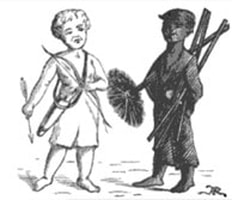 Illustration from an 1875 joke book
Illustration from an 1875 joke book My research and conclusions about this riddle are now published in the 2022 Jane Austen Society of North America journal, Persuasions online.
But—it's just a riddle, for pete's sake, and only one stanza of it appeared in Emma. (See after the break for the full poem). Why does a riddle deserve so much scrutiny? Allow me to explain...
How did I research and test Heydt-Stevenson's theories about the riddle? I applied my six critical questions, questions that I write about in more detail here.
| Six questions
|
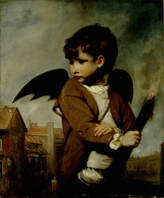 Cupid as a Link Boy
Cupid as a Link Boy The Georgians often referenced Cupid, the son of Venus, in their poetry, plays and novels. Cupid is still around today as a symbol of love, recognizable by his wings and his bow and arrow. Earlier versions of Cupid also had him carrying a torch and wearing a blindfold. A 1729 guide to the Greek and Roman gods says: “Cupid is naked because Lovers delight to be so. Cupid is a boy because he is void of Judgment… and he is blind, because a Lover does not see the Faults of his beloved Object, nor consider in his Mind the Mischief proceeding from that Passion."
The "hoodwink'd boy" in the poem is a reference to Cupid's blindfold and to a chimney-sweep who sticks his head up the hood of a chimney.
Sir Joshua Reynold's portrait at left is of a "link boy" --a little street urchin who was hired to walk ahead of carriages and help drivers find their way through the dark city streets. Reynolds pictures him as Cupid because he is carrying a torch.

Kitty’s roaring fire sets the soot in the chimney on fire. Did Kitty do something wrong when she built her fire? The original readers of the riddle understood how Kitty and Fanny built different kinds of fires. In The Domestic Revolution (2020), historian Ruth Goodman discusses the properties of various types of firewood. Hazel wood gets the fire going quickly in the morning. Ash is “the superstar of firewood… which burns beautifully and fairly cleanly even when quite green.” Oak is more long-lasting and gives the fire “staying power,” but it’s slow to get going. Oak, then, is your choice for a "slow but steady" fire.
Austen's contemporaries grew up in an age when relying on a fire for heat, cooking and light was a daily reality. For what it's worth, my family experienced a chimney fire when we lived in South Korea in the late 1950's. My mother was home with two small children when she realized the house was on fire. Without a telephone, she grabbed my sister and me and headed for the neighbor's house, then ran to nearby Yonsei University where my father was teaching. He and his students raced to the house and started throwing all our possessions out the windows before the fire engulfed the upper storey.
18th-century folk knew that sap “bleeds” from uncured firewood. A 1670 treatise published by the Royal Society of London described the behaviours of different species of wood when exposed to heat: “Poles of Maple, Sycamore and Walnut, cut down in open Weather, and brought within the Warmth of the Fire, did bleed in an instant…. Maple and Willow-poles bleed and cease at Pleasure again and again, if quickly withdrawn and balanced in the Hand." Hence, the reference in the poem to bleeding victims refers both to the victims of love and to the fuel thrown on the fire.
We might assume that Kitty and Fanny used coal for their fires as most Londoners did at this time. Goodman notes “the chimneys used while burning coal are… at a higher risk of catching fire than those used while burning wood." Coal still required wood kindling to get it going, so when Kitty "kindled a fire," she might have used some wood kindling to ignite her coal. Coal fires produce dirty, tarry, black smoke and households that used coal required chimney-cleaning several times a year.
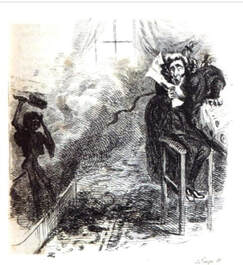 "Of his near approach afraid"
"Of his near approach afraid" The job of cleaning the chimney usually fell to little boys, often orphans taken out of the poorhouse and "apprenticed" to chimneysweeps by parish authorities. The idea of serving an apprenticeship to learn an actual trade was a farce, as there was little to learn about the job, and as soon as a boy was too big to fit up the chimney, he was out of a job. The work was miserable and unhealthy and chimney-sweeps lived, worked, and slept perpetually covered in grimy soot. The soot was collected and sold as fertilizer.
In the cartoon at left, a clergyman is startled by clouds of soot and the sudden appearance of a black imp in his fireplace. We can see how a cloud of soot might be harmful to a suit of clothes.
In the illustration above, the sweep is crying "Soot O--no Suit," an indication that the pronunciation of "soot" and "suit" in London at this time was similar enough that people could make puns on the words ("so fatal to my suit before.") Walker's Pronouncing Dictionary (1791) says of the word "soot;" "Soot is vulgarly pronounced to rhyme with but, hut, etc., but ought to have its long, regular sound, rhyming with boot." By "vulgarly," we might today say "commonly." The sweep with a bag of soot is a detail from an 1825 political cartoon about a couple who were suspected to be living together without benefit of clergy.
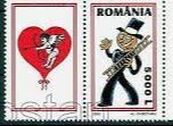
In Romania, the chimneysweep is associated with luck. In some extremely improbable tales, the sweep is connected with good fortune in love and so chimney-sweeps are invited to weddings. These Romanian stamps certainly indicate a cultural link between Cupid and chimneysweeps. Is this just a coincidence, or is there an underlying connection between cupids and chimneysweeps that extends further back in literature than the Kitty riddle? I have found a third century Greek poem about Cupid and fireplaces, but that's not quite the same as Cupid and chimneysweeps.
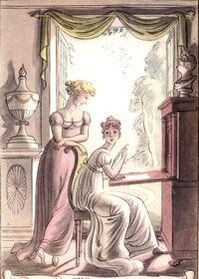
In volume I, chapter 9 of Jane Austen’s Emma, the heroine’s protégé, the sweet but dim-witted Harriet Smith, starts collecting “all the riddles of every sort that she could meet with, into a thin quarto of hot-pressed paper…. ornamented with ciphers and trophies."
Austen lets us know that collecting riddles is a trivial pastime which the girls choose to pursue instead of reading The Theory of Moral Sentiments in their leisure hours. “[Emma’s] views of improving her little friend’s mind, by a great deal of useful reading and conversation, had never yet led to more than a few first chapters, and the intention of going on to-morrow… and the only literary pursuit which engaged Harriet at present, the only mental provision she was making for the evening of life, was the collecting and transcribing all the riddles of every sort that she could meet with, into a thin quarto of hot-pressed paper, made up by her friend, and ornamented with ciphers and trophies."
Austen adds with mock seriousness: "In this age of literature, such collections on a very grand scale are not uncommon.”
Emma’s father, the fussy old “valetudinarian” Mr. Woodhouse “can only recollect the first stanza” of “Kitty, a fair but frozen maid” but he repeatedly assures Emma and Harriet that it is “very clever." Emma tells him that she and Harriet have already transcribed the riddle. “Yes, papa, it is written out in our second page. We copied it from the Elegant Extracts. It was Garrick’s, you know.”
Mr. Woodhouse nevertheless persists in trying to remember the riddle.
What does this passage tell us about Mr. Woodhouse? More thoughts on that later.
The Kitty riddle, its authorship and variations on the riddle
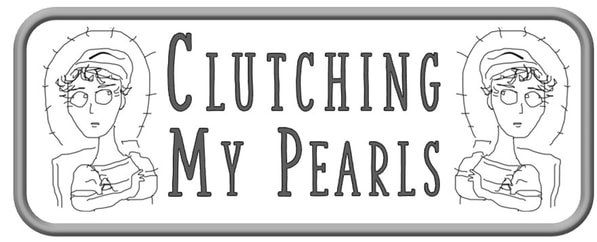
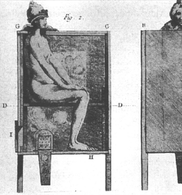
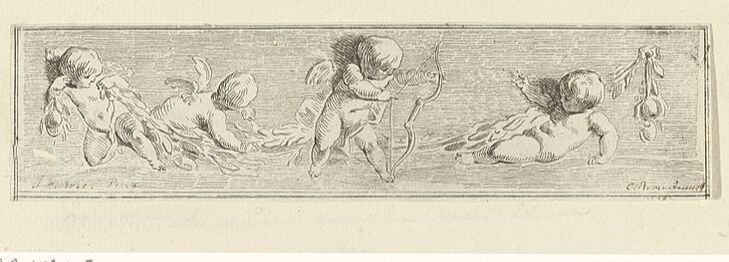
 RSS Feed
RSS Feed